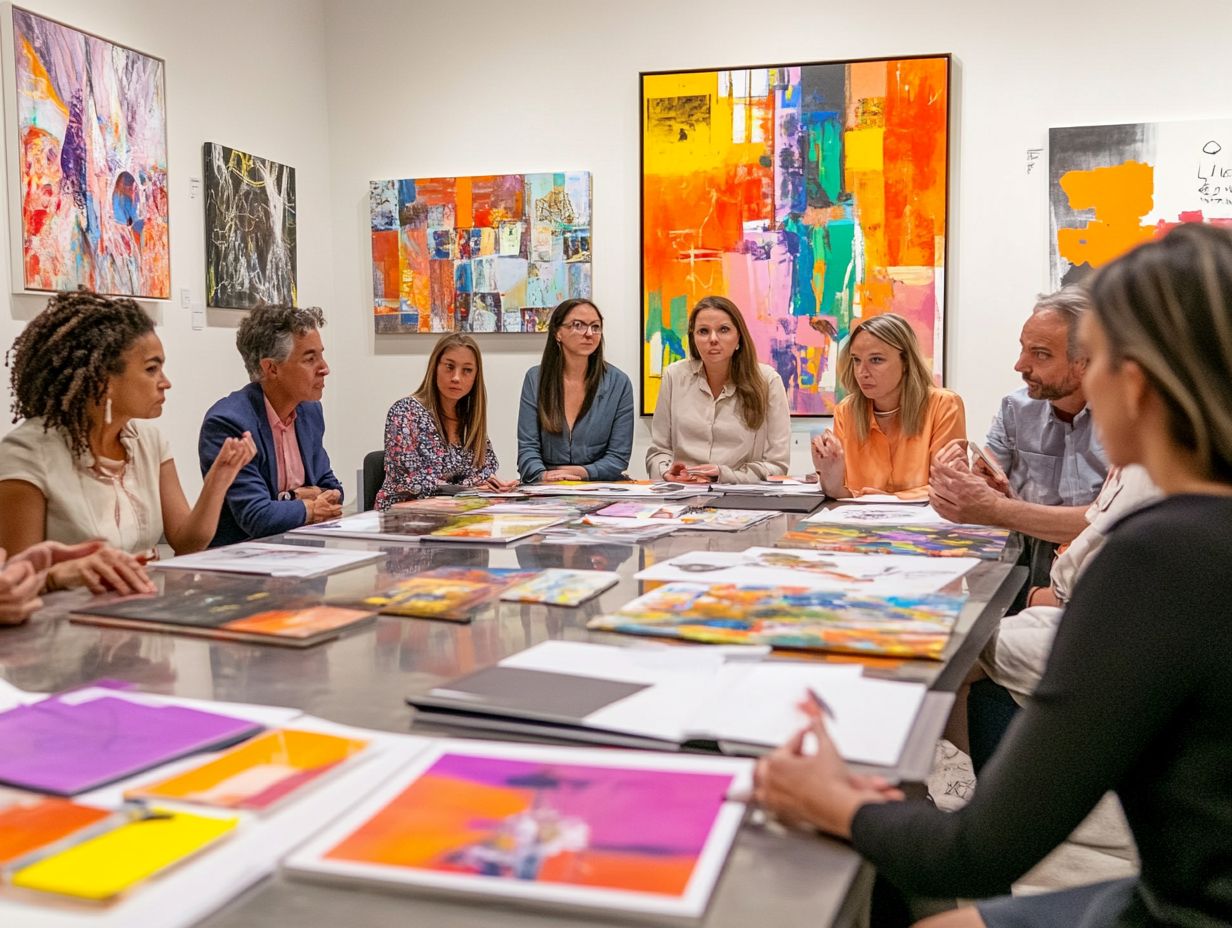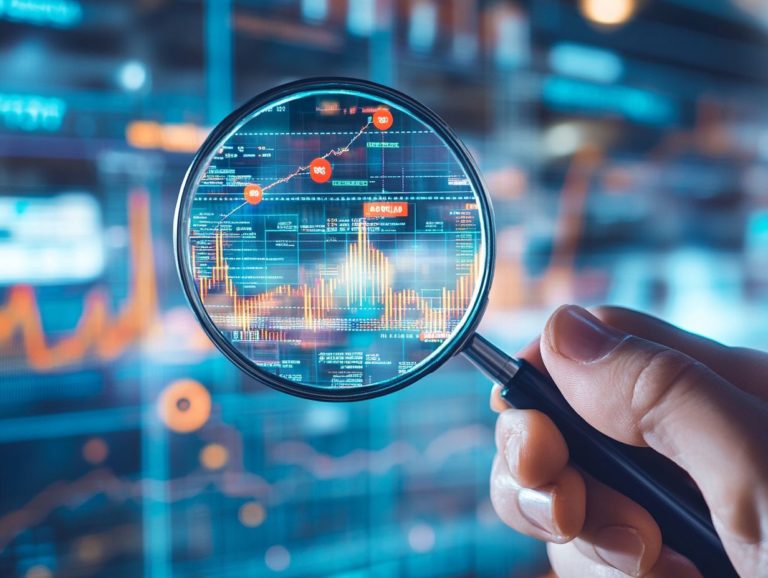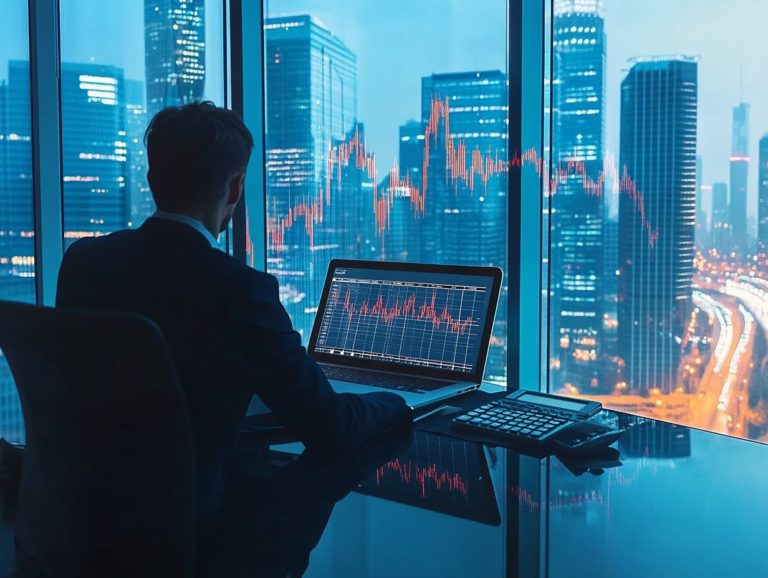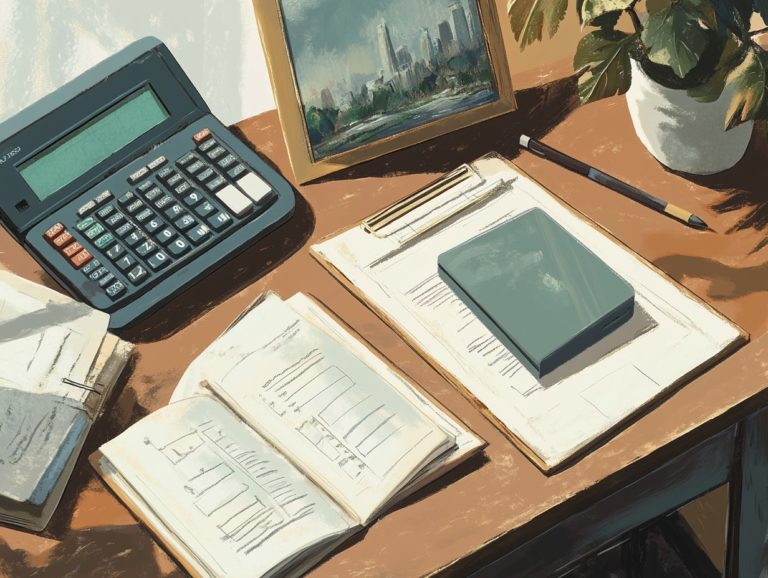Investing in Art: Strategies for Beginners
Investing in art offers you a great opportunity to merge your passion with the potential for profit. As the art market evolves, understanding its details is essential for newcomers and seasoned investors alike.
This guide will walk you through the essentials: understanding the dynamics of the art market, weighing the benefits against the risks, building a diverse collection, and mastering effective buying and selling strategies.
Discover how to manage and protect your investments, ensuring that your art enriches your life and secures your financial future.
Contents
Key Takeaways:

- Understand the art market before investing to make informed decisions.
- Consider diversifying your portfolio with different types of art to minimize risks.
- Attend auctions to buy and sell art, but do your research and set a budget beforehand.
The Basics of Investing in Art
Investing in art has gained popularity as the art market presents many opportunities for newcomers and seasoned collectors, as outlined in the intersection of art and investment.
It’s important to understand how auction houses like Sotheby’s and Christie’s work while appreciating the lasting value of blue-chip artists such as Picasso and Monet.
Navigating the nuances of art investment requires a thoughtful approach. Additionally, it’s important to be aware of understanding the risks of art investments, especially when watching for emerging artists gaining traction, as they offer ways to enrich your portfolio with contemporary pieces and historical sales.
Understanding the Art Market
The art market presents a complex network encompassing various sectors, including auction houses, galleries, and online platforms like Artnet and Artsy, each playing a vital role in shaping art prices and historical sales.
Within this intricate network, you ll find key players like collectors, artists, and investors who collaborate and compete, skillfully navigating different art movements that influence trends and valuations.
Emerging digital art, especially NFTs, has transformed traditional notions of ownership and provenance, capturing the attention of a younger demographic eager to immerse themselves in this dynamic landscape.
Meanwhile, well-established movements like Impressionism and Modernism continue to influence the market, often setting standards for auction results.
Understanding these elements is crucial for anyone seeking to grasp how the art market operates, as economic shifts, cultural dialogues, and technological advancements continually shape its evolving narrative.
Benefits and Risks of Investing in Art
Investing in art presents a unique mix of benefits and risks that you should carefully consider. It’s not just about aesthetics; there’s the potential for long-term financial gains. Before making a decision, it’s wise to understand what to consider before investing in art, and consulting with a financial advisor is essential to navigate the complexities of investment-grade art successfully.
Incorporating fine art into your portfolio can enhance diversification, providing a buffer against fluctuations typical in traditional markets. Many artworks not only maintain their value but can appreciate significantly over time, making them attractive assets worth your attention.
As a prospective investor, you must stay alert to market volatility, as the art world can experience sudden shifts like economic downturns. The importance of professional art appraisal cannot be overstated; a thorough evaluation gives you a clear understanding of an artwork’s true market value.
Stay sharp and make informed choices to thrive in your art investment journey!
Building an Art Collection
Building a successful art collection requires insight into both emerging talents and established blue-chip artists. It’s essential to evaluate not only the intrinsic value of each piece but also the potential for growth in your collection over time.
By thoughtfully curating your choices, you position yourself to appreciate the evolving landscape of the art world while nurturing a collection that resonates with your aesthetic sensibilities and investment aspirations.
Types of Art to Consider

When you embark on the journey of building an art collection, it s crucial to grasp the various types of art to consider. Think about contemporary pieces, emerging artists who are beginning to shine, and blue-chip artists renowned for their investment-grade status.
Each category has its own allure and potential for appreciation over time. Contemporary art often mirrors current cultural trends and can yield impressive returns, particularly when you focus on works by artists on the rise.
Investing in pieces from emerging talents is like capturing lightning in a bottle, offering an exhilarating thrill. Don’t overlook other genres, such as modern art or classic masterpieces, as well as photography. For those interested in diversifying their portfolio, investing in gold can also be a valuable consideration.
Exploring these avenues can enrich your collection and diversify your risks. This not only enhances the overall aesthetic appeal but also makes your collection potentially more profitable in the long run.
Tips for Finding and Evaluating Art
Start your evaluation by researching thoroughly and using appraisal services to confirm authenticity. These services are invaluable for establishing the accurate valuation of pieces, especially those sourced from auction houses.
Immerse yourself in the dynamic environments of local galleries and exhibitions. Here, emerging artists showcase their latest creations, and attending art auctions can offer invaluable insights into market trends.
Building connections with gallery owners and fellow collectors is essential. These relationships can grant you advance notice of new arrivals or exclusive private sales.
Understanding the history and condition of artwork helps you make informed decisions. This ensures that each acquisition resonates with your personal taste while aligning with your investment goals.
Investing in Art: Strategies for Beginners
Investing in art can be an incredibly rewarding journey. Embracing effective strategies for reducing risk in art investments is essential, especially as digital art and NFTs gain significant traction in the contemporary art market.
Diversifying Your Portfolio
Diversifying your portfolio through art investment means curating a thoughtfully selected mix of art pieces. To achieve balanced exposure to investment-grade art, it’s beneficial to understand art valuation for investors by blending contemporary works with those from emerging artists.
This strategy enhances your potential returns and helps mitigate the risks associated with market fluctuations. By incorporating a variety of styles and periods, you can better navigate the inherent unpredictability of the art market.
Imagine the thrill of discovering a hidden gem! While contemporary art may present high-growth opportunities, investing in established artists or classic pieces can offer a sense of stability.
Incorporating diverse mediums, like photography or sculpture, strengthens your portfolio against economic downturns, allowing you to create a well-rounded collection that balances potential risk with attractive returns.
Buying and Selling Art at Auctions
Buying and selling art at prestigious auction houses like Sotheby’s and Christie’s can offer you an exhilarating experience. Understanding historical sales and current art prices shapes your bids.
However, navigating this dynamic landscape requires a well-informed approach to ensure you don t overlook potential treasures or make expensive errors.
Familiarity with auction terminology, pre-auction estimates, and commission fees imposed by the auction house is crucial for both buyers and sellers.
As a potential buyer, meticulously research past auction results and understand the history of ownership of the artwork to truly assess its value.
For sellers, timing and market trends are key considerations when curating collections for sale. Collaborating with auction specialists can refine your strategy, enabling you to make informed decisions that enhance your buying and selling experience.
Don t wait! The art market is evolving rapidly, and now is the time to dive in.
Managing and Protecting Your Art Investment

Managing and protecting your art investment is essential. It requires a keen understanding of the significance of insurance policies, thoughtful storage considerations, and regular appraisals to keep the value of your collection safe over time.
By attending to these aspects, you can ensure that your investment remains secure and continues to appreciate.
Insurance and Storage Considerations
In terms of protecting your art investment, insurance and storage considerations are essential. You want to make sure your pieces are safeguarded against damage and loss while keeping their value safe.
As an art collector, you should explore various types of insurance tailored to your unique needs. For instance, consider agreed value coverage, which guarantees you receive a predetermined amount in the event of a loss. Alternatively, museum-quality coverage is designed specifically for high-value pieces often displayed in galleries.
Safely storing your art requires controlled climate conditions with stable temperature and humidity levels to prevent deterioration. Using archival materials for framing and packaging is also crucial.
By employing professional art handlers and reputable storage facilities, you ensure that the integrity of your art collection remains intact over time.
Tracking the Value of Your Art Collection
Tracking the value of your art collection is essential as an art collector. It requires regular appraisals while staying updated on the ever-changing art prices and trends in auction houses.
To effectively monitor these values, consider engaging financial advisors who specialize in art. They can provide you with tailored insights and help protect your investments. Art appraisal services offer professional assessments that take into account factors like the artwork’s history, condition, and market demand.
Regularly consulting auction results and exhibition outcomes will also enhance your understanding of how specific pieces are performing in the current market.
Combining these strategies will accurately value your collection, giving you peace of mind and confidence in making future decisions.
Frequently Asked Questions
What are some strategies for beginners looking to invest in art?
Some strategies for beginners include researching the market, consulting with experts, setting a budget, and considering whether investing in art is a good idea as a way to diversify their portfolio.
Why should I consider investing in art?

Investing in art opens doors to high returns, tangible assets, and portfolio diversification!
How do I determine the value of a piece of art?
The value of a piece of art can be determined by factors such as the artist’s reputation, demand for their work, the artwork’s history, and the condition of the piece.
What are the risks of investing in art?
Some risks of investing in art include market fluctuations, fraudulent sales, and the potential for the value of the artwork to decrease over time.
How can I protect my investment in art?
You can protect your investment by purchasing from reputable sources, getting artwork appraisals, and insuring your pieces.
Are there any tax benefits to investing in art?
Yes, investing in art can provide tax benefits such as deductions for expenses related to the artwork and the potential for tax-free profits if held for a certain period of time.
Ready to start your art investment journey? Dive deeper into the world of art today!






